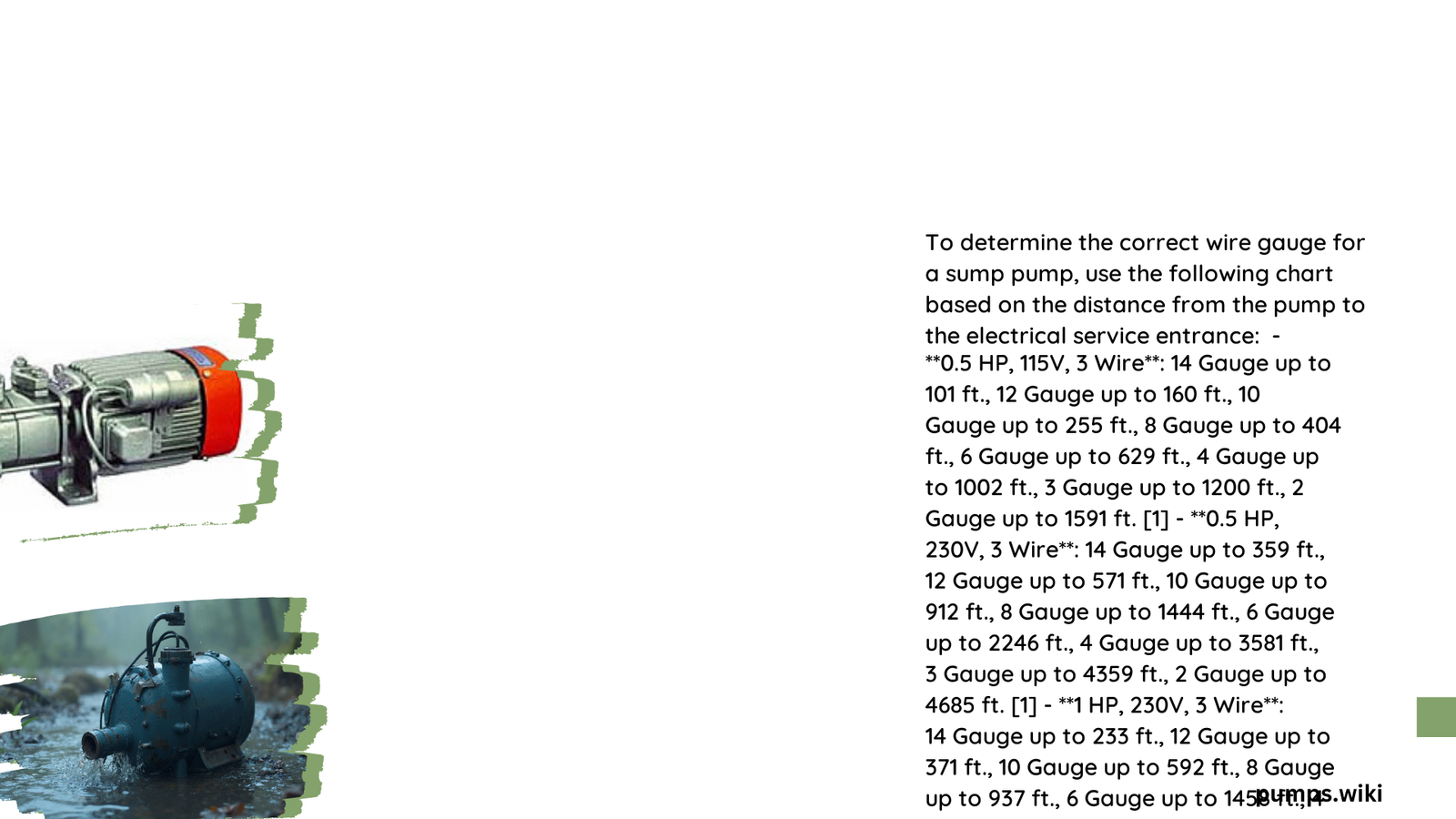Selecting the correct sump pump wire gauge is crucial for ensuring optimal performance, preventing voltage drop, and maintaining electrical safety. Homeowners and professionals must carefully consider multiple factors such as pump horsepower, voltage, installation distance, and electrical code requirements to choose the most appropriate wire size for their specific sump pump setup.
What Determines the Correct Sump Pump Wire Gauge?
Selecting the right wire gauge for a sump pump involves several critical considerations:
Factors Influencing Wire Gauge Selection
- Pump Horsepower
- 0.5 HP pumps require different wire specifications compared to 1 HP or 3 HP models
-
Higher horsepower pumps demand larger wire gauges to handle increased electrical load
-
Voltage Requirements
- 115V and 230V systems have different wire gauge recommendations
-
Voltage directly impacts the current draw and wire size selection
-
Installation Distance
- Longer distances require larger wire gauges to minimize voltage drop
- Wire resistance increases with distance, necessitating appropriate gauge selection
Wire Gauge Recommendations by Pump Size
| Pump Horsepower | Voltage | Recommended Wire Gauge | Maximum Distance |
|---|---|---|---|
| 0.5 HP | 230V | 14 Gauge | 359 feet |
| 1 HP | 230V | 12 Gauge | 371 feet |
| 3 HP | 230V | 10 Gauge | 540 feet |
How to Calculate the Appropriate Wire Gauge?

Voltage Drop Calculation Method
The voltage drop calculation helps determine the most suitable wire gauge:
Voltage Drop = (Wire Length × Current × Resistance) ÷ (Conductor Cross-Sectional Area)
Key Calculation Steps
- Measure total wire length
- Determine pump’s current draw
- Consider wire material resistance
- Select wire gauge that minimizes voltage drop
What Are the Common Wire Gauge Mistakes?
Potential Pitfalls to Avoid
- Underestimating Distance
- Failing to account for total wire run length
-
Neglecting additional cable length from service entrance
-
Ignoring Electrical Codes
- Not following National Electrical Code (NEC) guidelines
- Risking potential safety hazards and insurance complications
Best Practices for Sump Pump Wire Installation
Recommended Installation Techniques
- Use copper conductors with appropriate insulation
- Ensure proper grounding
- Install Ground Fault Circuit Interrupter (GFCI) protection
- Verify wire gauge compatibility with circuit breaker ratings
When Should You Consult a Professional?
Complex Installation Scenarios
- Multi-phase pump systems
- Extensive wire runs exceeding standard recommendations
- Custom or non-standard electrical configurations
Technical Considerations for Wire Selection
Additional Electrical Parameters
- Ambient Temperature
- Wire rating can change based on surrounding temperature
-
Consider temperature derating factors
-
Conductor Material
- Copper vs. aluminum wire performance differences
- Thermal and electrical conductivity variations
Maintenance and Periodic Review
Ensuring Long-Term Electrical Safety
- Inspect wire connections annually
- Check for signs of wear or degradation
- Update wire gauge if pump specifications change
Conclusion
Selecting the correct sump pump wire gauge requires careful analysis of multiple technical factors. By understanding voltage, distance, and electrical load requirements, homeowners can ensure safe and efficient sump pump operation.
